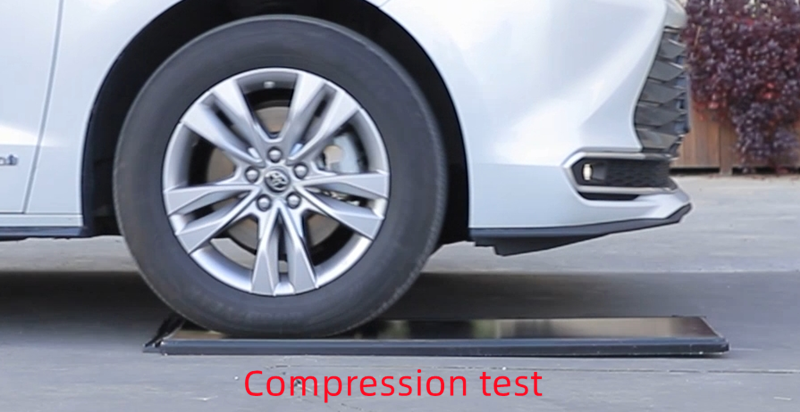
Homeowner Guide | What are the load-bearing capacity requirements for solar roof tiles?
2024-11-15 15:08
Before considering the installation of solar roof tiles, there are specific requirements for the load bearing capacity of the roof as follows:
1. Static load requirements
Static load refers to the static state, solar tiles system long-term role in the roof load.
Solar roof tiles weight:
The weight of different types and sizes of solar roof tiles varies. In general, the weight of the most common types of solar tiles from sgbsolar varies from about 13 to 30 kilograms per square meter.
The T MAX O, which is designed for most roofs, weighs 30 kg per square, and the T MAX L-C, which is designed for lightweight roofs, weighs about 13 kg per square.
Therefore, before installing solar roof tiles, homeowners need to take into account the weight of the solar tiles, which are an important part of the roof, and which need to be carried continuously by the roof.
Weight of other additional equipment:
In addition to the weight of the solar roof tiles themselves, there may be inverters, distribution boxes, cables, and other equipment. Although they are not evenly distributed on the roof, their weight must be taken into account. For example, an average small inverter may weigh 10 - 30 kg, and a distribution box 5 - 20 kg, depending on the size.
Combined above, the roof needs to be able to withstand the static load imposed by these devices and components for a long period of time, the general requirement of the static load capacity of the roof should be at least 20 - 30 kg per square meter or more, the specific value should be based on the actual installation of the solar tiles system size and equipment selection to determine.
2、 Dynamic Load Requirements
Dynamic load is mainly considered in the role of external factors, solar tiles system on the roof of the temporary, dynamic load.
Wind load:
When encountering windy weather, solar tiles system will be subject to wind force, resulting in pressure or suction force on the roof. The size of the wind load is related to the local basic wind pressure, the height of the building, the mounting height of the solar system, the shape of the module and other factors.
Generally speaking, in windy areas, the roof needs to have a stronger load-bearing capacity to withstand wind loads. For example, in coastal areas that are often hit by typhoons, the roof may need to be able to withstand wind loads of several hundred kilograms per square meter or even higher (specific values need to be calculated according to local meteorological conditions and relevant norms). For inland areas, the wind load is relatively small, but also needs to be considered according to the actual local conditions, usually requiring the roof to be able to withstand wind loads of several tens of kilograms per square meter.
T MAX O wind load value of 2400 Pa per piece, that is, a piece of solar tiles can withstand high winds 122 kg weight load.

Snow load:
In areas with snowfall, snow can accumulate on the roof of solar roof tiles and increase the roof load. The size of the snow load depends on the local snowfall, snow depth, snow density and the form of installation of the solar system.
For example, in snowy areas in the north, where snow depths can reach several tens of centimeters and snow density varies, the roof needs to be able to withstand the corresponding snow load. Normally, roofs are required to be able to withstand snow loads ranging from 10 - 50 kg per square meter (the exact value should be calculated according to local meteorological conditions and relevant norms).
T MAX O snow load value of 5400 Pa per piece, that is, a piece of solar roof tiles can withstand heavy snow load of 275 kg.

3、Safety factor considerations
In order to ensure the long-term safety and stability of the roof after the installation of the solar system, a certain safety factor is usually taken into account when evaluating the load-bearing capacity of the roof.
Generally, the calculated static and dynamic load requirements are multiplied by a safety factor, which is usually between 1.2 and 1.5. In other words, if a roof is calculated to have a load capacity of 100 kg per square meter, the actual load capacity of the roof, taking into account the safety factor, may be 120 - 150 kg per square meter.
Sgbsolar's solar roof tiles are fully capable of withstanding the weight of regular heavy winds and snow (in some extreme climatic areas this is determined by local meteorological conditions and relevant norms), so homeowners need to make a choice according to the specific conditions of their house.
For steel and wood lightweight roofs, sgbsolar recommends T MAX L and T MAX L-C, solar roof tiles for lightweight roofs, which are the most suitable choice for you.
If you have a conventional concrete roof with a high load-bearing capacity, then either T MAX O or T MAX L will work.
If it is a windy, snowy area, then T MAX O is the best choice for you.
Before installing solar roof tiles, be sure to accurately assess the load-bearing capacity of the roof. You can determine whether the roof meets the load-bearing requirements for solar system installation by checking the architectural design drawings and consulting with professional structural engineers, etc. If it doesn't, you will need to take appropriate reinforcement measures.
FAQ
1、What is the impact of shadow blocking on solar roof tiles?
2、Solar Roof Tile Seasonal Maintenance Guide
3、Solar Roof Tile Installation Guide
contact us
Sgbsolar is the world's leading professional solar roof tiles manufacturer, integrating design, production, sales and maintenance. we have been committed to the world's energy saving and emission reduction, creating a low-carbon and environmentally friendly society. contact us for your solar roof tiles solution!
